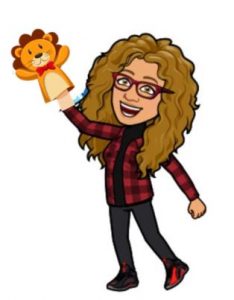 World Puppetry Day has been celebrated every year on March 21st since 2003. Even though the art of puppetry is very old it was not until the first half of the 20th century that puppeteers began sharing more information about their work. The proposal for the celebration of the day was made in 2000 at the XVIII Congress of the Union Internationale de la Marionnette, (UNIMA) in Magdeburg.
World Puppetry Day has been celebrated every year on March 21st since 2003. Even though the art of puppetry is very old it was not until the first half of the 20th century that puppeteers began sharing more information about their work. The proposal for the celebration of the day was made in 2000 at the XVIII Congress of the Union Internationale de la Marionnette, (UNIMA) in Magdeburg.
Puppetry is a very ancient form of theatre which was first recorded in the 5th century BC in Ancient Greece. Some forms of puppetry, though, may have originated as long ago as 3000 years BC. In almost all human societies puppets have been used for the purpose of entertainment, as sacred objects in rituals, as symbolic effigies (in celebrations such as carnivals), and as a catalyst for social and psychological change in transformative arts.
There is a wide range and many different varieties of puppets, ranging from the simple finger and sock puppets to hand (or glove) puppets (larger forms such as the Japanese Bunraku may even require two puppeteers for each puppet!) and to more elaborate marionettes, suspended and controlled by a numbers of strings or rods. Shadow puppets are also widely used: flat figures (which have been treated to make them partly translucent), they are pressed against the screen with a strong source of light behind them.
Today, puppets are everywhere. Puppets can be seen on stage, on television, and in the movies.
Some of the most famous puppets include:
Pinocchio / Punch and Judy / Kermit the Frog / Elmo et al.
- Puppet Festival at Apple Market, London
Using puppets in the classroom can be an engaging and useful way to help students develop emotionally and grow their language and communication skills. Research shows that using puppets in education has many benefits especially with language skills. Children can practice their oral speaking skills by telling a story to a puppet or explaining words or expressions. If the puppet is “confused” and doesn’t understand something, the child can explain and show the puppet what he has learned.
When used by the teacher, puppets are a good tool to get young children’s attention and create teaching scenarios: puppets can sing songs, tell stories, count, and deliver learning across the whole curriculum. They are an excellent tool for developing listening and attention, phonics and maths skills, and personal development.
I have been using puppetry in my teaching for all the aforementioned reasons, but mostly because I have reserved the child enthusiasm for puppets in my heart!
My feeble attempts have all been linked to my lessons:
1st grade: The Very Hungry Caterpillar (for details see here) / A party in the jungle (puppets) (for details see here) / A party in the jungle (paper puppets) (for details see here)
3rd grade: Pinocchio
6th grade: Mythical Creatures (shadow puppets): Polyphemus the Cyclops (for details see here)
Christmas elves: Rosie and Nosie
Most of the times my ‘Homemade Productions’ aim at instigating students to find their own inspiration and artistic voice!







